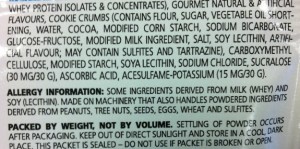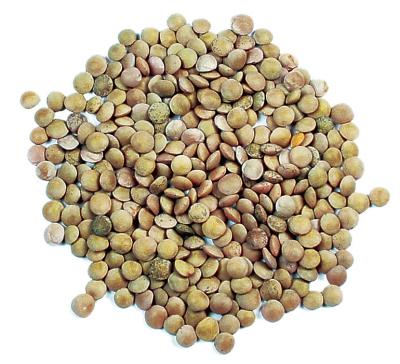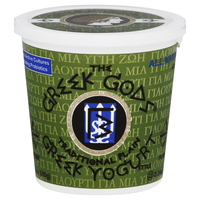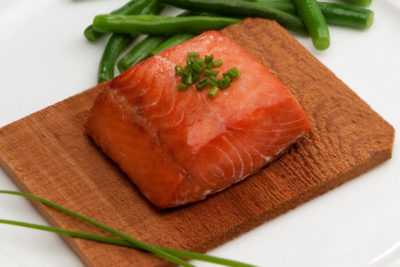Shake it up! Shake weights, protein shakes, shake your booty… There’s plenty of shaking to be done. But in this case, we want to know: should you shake it up in your kitchen, with ingredients from the refrigerator, or shake it out of the protein packet for your perfect shake?
Let’s discuss three different aspects of a shake: ingredients, protein content, and efficiency.
Shakes made in house are packed with all kinds of fresh ingredients. Many boast the inclusion of greens (spinach, kale, avocado, fresh herbs), fruits (strawberries and others of the berry persuasion, bananas, mangoes, etc.) and proteins (almond/peanut/cashew butters, soy/almond/hemp or regular milk, to name a few). Each of these whole foods add to the vitamin and mineral count for a more nutritious and healthy replacement meal or snack, with a good balance to them. Check out a nutritional breakdown of a few of my smoothies.
Now, take a look at an example in this list of ingredients on a very popular protein powder:
The list is extremely long, full of names that take more than four syllables to spit out. And the daily percentages of nutrients in many of these pre-made potions don’t give as much of a payback as a smoothie made straight from your own fresh produce. Check out what vitamins and minerals you get a complete daily dose of through these smoothies.
Another benefit of protein shakes made at home, is that you’re able to control the amount of protein, fat and calories that go into your smoothie. With pre-made shakes and mixes, you run the risk of wasting your goal: protein. Carbohydrates (glucose and glycogen) are the body’s most important source of fuel for muscles. Amino acids (proteins) only account for 2-10 percent of total energy expenditure, and even that amount is primarily used during endurance exercise. Also, be sure to not overdo the protein requirements for your body’s needs per day.
The Recommended Amount of Protein
The recommended amount of protein, or the Dietary Reference Intake (DRI) is .8 grams per kilogram of body weight (.8g/kg). To convert pounds to a kilograms, divide your weight (in pounds) by 2.2. Recommended Dietary Allowance (RDA) values for women ages 19+ years old is 46 grams of protein per day, and men of the same age are supposed to get 56 grams of protein per day.
For any of these numbers and calculations to make any difference, you must be aware that your body’s optimal intake of protein has been observed at 20 grams of protein per sitting. All the excess protein may lead to:
- Decreased intake of other necessary nutrients
- Extra protein being stored as fat
- Increased urea production, which leads to faster dehydration and over-worked kidneys
Here are a few examples of whole foods with high protein sources:
What I’m trying to say is that efficiency of fresh, whole-food ingredients expresses versatility; there are so many different ways to incorporate adequate protein in your diet, while maintaining balance with nutrition. Using produce such as spinach, kale, and dark leafy greens, keeping fresh fruits on hand, and knowing which lean sources of proteins to use on a daily basis, should always be considered when pre-planning for a meal or snack. These versatile produce ingredients can also be used to make other healthy creations, and can be stored frozen for later, steamed, sauteed, baked, etc., and many items can even be eaten raw!However, with pre-packaged protein powders or protein shakes, most are mixed with milk or water and consumed. There are also a slew of GMO’s which include pesticides, artificial colors, MSG, etc., that are included in pre-packaged powders and shakes. Most protein powders/shakes are not certified organic, nor are they non-GMO project certified, which means the ingredients can be harmful and potentially toxic with long-term exposure or consumption.
Making your own smoothies or protein shakes at home can afford you the opportunity to:
- mix & match your own with the right amount of vitamins, minerals, proteins, carbohydrates, fats
- utilize all of the ingredients so they work best for your body and fuel needs
- restock your fridge and pantry with items you’ll want to use again as you prepare other meals
So if you are in need of a protein shake, I recommend using whole foods that contain protein to create your own. Use greens such as spinach and kale, proteins like nuts or nut butters, almond/soy/organic milk, and fruits like banana and avocado. Another safe addition to your shake is maca powder, which contains 18 of the 20 essential amino acids to help synthesize your protein. If you haven’t already, check out my smoothie guide to get started.
The bottom line: It is always best to make your own shakes from scratch by using fresh, whole food ingredients.
I realize that not all of you will heed 100% of this advice, or take the time for a little extra prep and planning, so I have included a few select brands of protein powders that do include better, safer ingredients than the rest of the million options out there. Here are 4 protein powders that I have found are safer than the rest: Warrior Food Extreme, Tera’s Organic Whey, Nutiva’s Hemp Protein, and Garden of Life Raw. But please keep in mind.. if you aren’t careful with the selection of pre-made protein powders, you could end up causing more harm than help to your body.





This was truly informational for me, and answered a problem I have been having lately! My husband and I will drink a smoothie at times for breakfast, but we usually have to make two different glasses because I don’t want to consume his protein powder! I have been trying to avoid these pre-made shakes/powders for the same reasons you mention here, but continue to feel I need more protein at breakfast. I was so happy to see that Hemp protein is a Patty-approved-ingredient, because I had just purchased it for my husband to use as a substitute for his other protein powders he buys. Now I only have to make one batch for breakfast, and know I ‘m not harming my body in any way. Thanks Patty for helping me realize there are actually other clean and healthy options out there!
I love this article about me making my own shakes/smoothie’s and adding my own protein instead of purchasing pre made protein powders drinks. I never heard of maca powder, is there a brand you like over others? Thanks-
I love Nutiva’s organic hemp protein! Thank you posting this and also offering vegan alternatives!